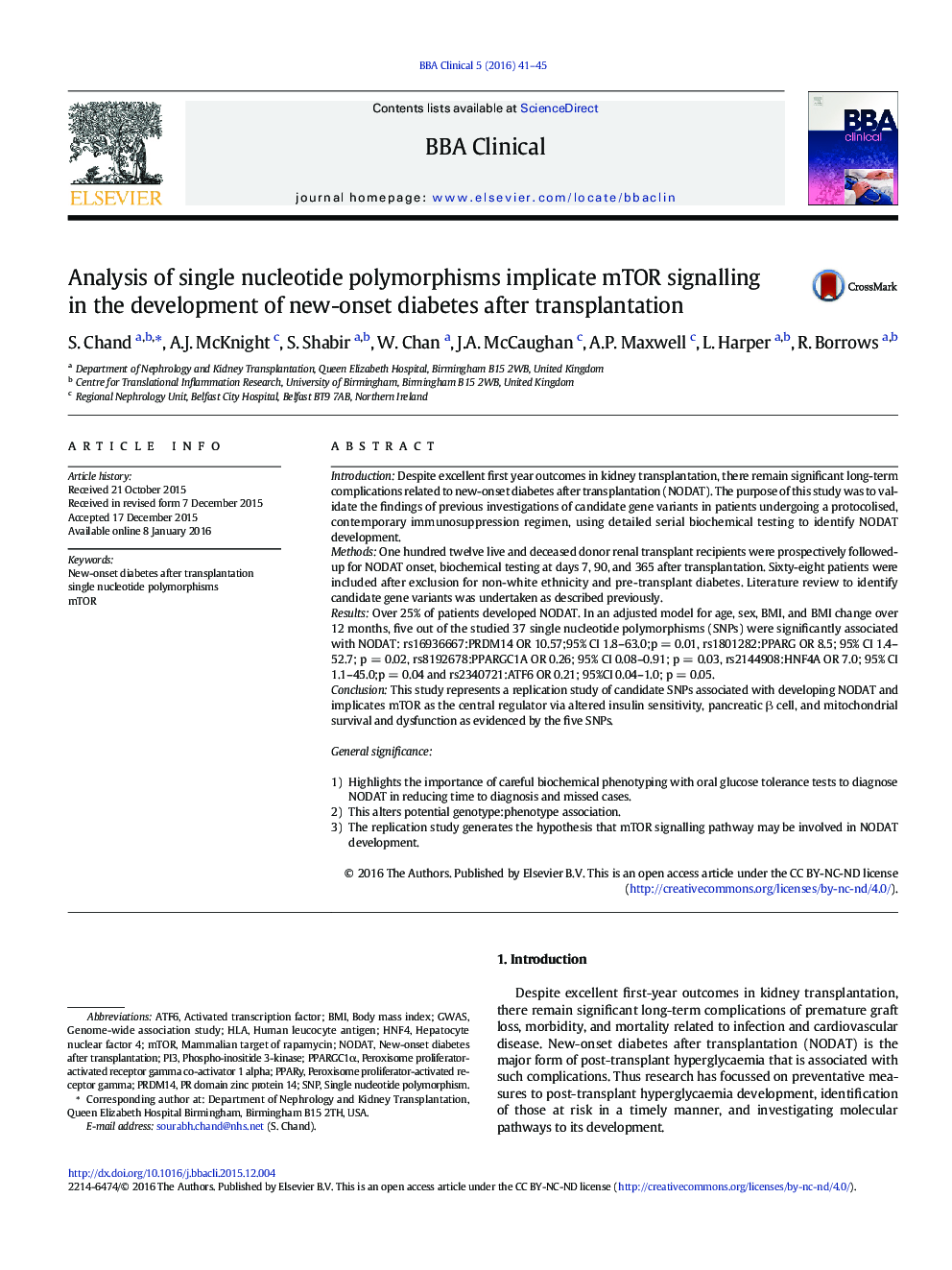| Article ID | Journal | Published Year | Pages | File Type |
|---|---|---|---|---|
| 2773087 | BBA Clinical | 2016 | 5 Pages |
•Oral glucose tolerance tests reduce time to NODAT diagnosis and missed cases•Biochemical testing changes genotype:phenotype association•mTOR signalling pathway may be involved in NODAT development
IntroductionDespite excellent first year outcomes in kidney transplantation, there remain significant long-term complications related to new-onset diabetes after transplantation (NODAT). The purpose of this study was to validate the findings of previous investigations of candidate gene variants in patients undergoing a protocolised, contemporary immunosuppression regimen, using detailed serial biochemical testing to identify NODAT development.MethodsOne hundred twelve live and deceased donor renal transplant recipients were prospectively followed-up for NODAT onset, biochemical testing at days 7, 90, and 365 after transplantation. Sixty-eight patients were included after exclusion for non-white ethnicity and pre-transplant diabetes. Literature review to identify candidate gene variants was undertaken as described previously.ResultsOver 25% of patients developed NODAT. In an adjusted model for age, sex, BMI, and BMI change over 12 months, five out of the studied 37 single nucleotide polymorphisms (SNPs) were significantly associated with NODAT: rs16936667:PRDM14 OR 10.57;95% CI 1.8–63.0;p = 0.01, rs1801282:PPARG OR 8.5; 95% CI 1.4–52.7; p = 0.02, rs8192678:PPARGC1A OR 0.26; 95% CI 0.08–0.91; p = 0.03, rs2144908:HNF4A OR 7.0; 95% CI 1.1–45.0;p = 0.04 and rs2340721:ATF6 OR 0.21; 95%CI 0.04–1.0; p = 0.05.ConclusionThis study represents a replication study of candidate SNPs associated with developing NODAT and implicates mTOR as the central regulator via altered insulin sensitivity, pancreatic β cell, and mitochondrial survival and dysfunction as evidenced by the five SNPs.General significance1)Highlights the importance of careful biochemical phenotyping with oral glucose tolerance tests to diagnose NODAT in reducing time to diagnosis and missed cases.2)This alters potential genotype:phenotype association.3)The replication study generates the hypothesis that mTOR signalling pathway may be involved in NODAT development.
